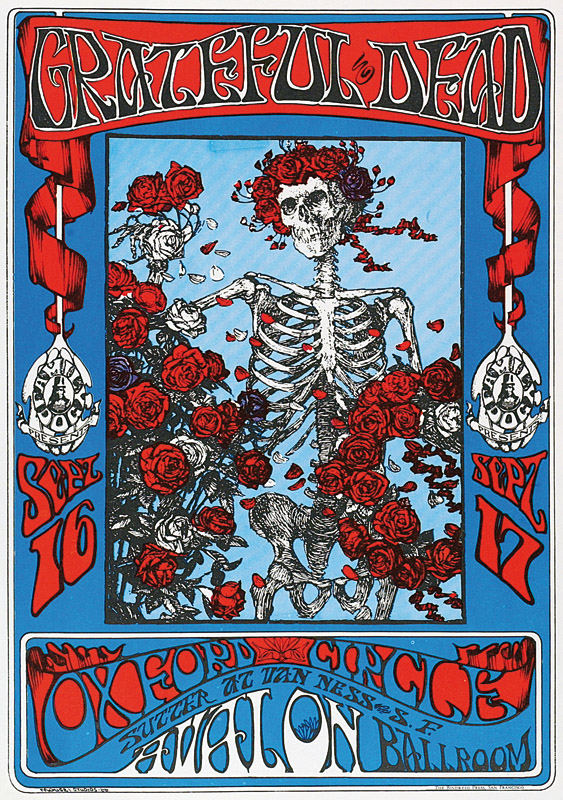
The exact day on which it was formed under the new name can no longer be traced. What is certain is that at the beginning of December 1965 the largely unknown band Warlocks, which had come together in May of the same year, changed its name to Grateful Dead. Much to the chagrin of concert promoter Bill Graham, who had become aware of the group the month before and had taken it under his wing.
But there are two more years that mark the birth of the biggest of all jam bands. On the one hand 1938 - the year in which the Swiss chemist Albert Hofmann discovered LSD in a laboratory of the chemical company Sandoz; on the other hand 1943 - the year in which the scientist learned for the first time about the effect of his discovery on the human brain, namely on his own body.
Even though Dennis McNally, author of the acclaimed Dead biography "A Long Strange Trip", stresses that the band has always been primarily about music and not drugs, the fact is that without the discovery Hofmann made - at a time when none of the five musicians had yet been born - Grateful Dead would have become another band. The musical development of the group, its appearance, its self-image, its view of the world, its lyrics, the atmosphere and structure of its concerts - all this would be inconceivable in this form without the hallucinogenic key stimuli of acid.
On their trips inside, the musicians - with the exception of Pigpen, who confided exclusively in alcohol - got their inspiration. They were flooded with impressions from their subconscious. At the same time, the LSD whistles were a collaborative, unifying experience. For example, bassist Phil Lesh remembers a trip he threw in together with Jerry Garcia in Los Angeles in 1966: "He never felt so close to Garcia off stage again.
The Great High Hope
Grateful Dead demonstrated a lifestyle that other music groups - even outside the USA - imitated. And also for the fans, what the Dead stood for became meaningful. The Great High Hope, as the group was also called, represented a promise that an alternative life plan was actually feasible. That social boundaries had to be overcome. That the role of the individual in society could be redefined.
Shortly before she got her new name, the writer Ken Kesey ("One flew over the cuckoo's nest") had won the young formation as a house band for his acid tests. At these wild happenings, Phil Lesh's term for "uncontrolled anarchy," Kesey distributed plenty of LSD at his home in La Honda, California, which was legal in the U.S. at the time. The core of his following were the Merry Pranksters, a colourful bunch, essentially half Beatnik, half Hippie.
The first concert of the Grateful Dead took place in San Jose on 4 December 1965 as part of one of these meetings. According to Phil Lesh it was the first time that all members - with the exception of Pigpen - were on acid at one show at the same time. Lesh: "I immediately realized that this combination - LSD and music - was the tool I was looking for."


